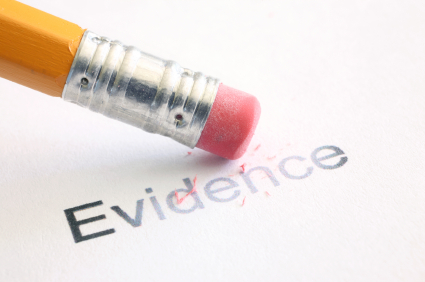 In an ADA employment case, the Plaintiff sought spoliation sanctions and an adverse inference instruction for the destruction of electronically stored information (ESI). Scalera v. Electrograph Sys., 2009 U.S. Dist. LEXIS 91572 (E.D.N.Y. Sept. 29, 2009).
In an ADA employment case, the Plaintiff sought spoliation sanctions and an adverse inference instruction for the destruction of electronically stored information (ESI). Scalera v. Electrograph Sys., 2009 U.S. Dist. LEXIS 91572 (E.D.N.Y. Sept. 29, 2009).
The Plaintiff lost.
The Discovery Requests
The Plaintiff sought the following discovery:
1) All emails sent or received by Defendant’s employees regarding Plaintiff’s medical condition;
2) All emails sent by Defendant’s employees regarding Plaintiff’s request or need for any accommodation for her medical condition;
3) All emails sent on Defendant’s “Inter-Office email system” to and from Plaintiff from 2005 to the present, “including any emails predating Plaintiff’s employment;” and
4) All “backup and/or archive (computer) data which was generated by Defendants” and related to Plaintiff’s employment. Scalera, at *5.
Discovery Production History
In the Plaintiff’s version of the facts, the Defendant only produced a “handful” of email. Scalera, at *5.
The Defendant provided 16 backup tapes to an electronic discovery service provider. Scalera, at *6. Only two of the tapes met “the criteria for restorable data.” Scalera, at *6. The vendor was unable to restore the backup tapes, which the Plaintiff claimed spoliation that required an adverse inference sanction. Scalera, at *6.
Requirements for Adverse Inference Instructions
A party must prove the following for spoliation warranting an adverse inference instruction:
1) “The party having control over the evidence had an obligation to preserve it at the time it was destroyed;”
2) “The records were destroyed with a ‘culpable state of mind;’” and
3) “The destroyed evidence was ‘relevant’ to the party’s claim or defense such that a reasonable trier of fact could find that it would support that claim or defense.”
Scalera, at *7, citing Toussie v. County of Suffolk, 2007 U.S. Dist. LEXIS 93988, at *6 (E.D.N.Y. Dec. 21, 2007).
The Duty to Preserve
As one can imagine, the Plaintiff argued the duty to preserve for her discrimination claim arose very early, after she fell down steps and sent a letter to the building landlord. Scalera, at *7-11, 28.The Court disagreed and held the duty to preserve arose when the Defendants received the EEOC charge for discrimination. Scalera, at *25.
The Court found the Plaintiff’s arguments for when the duty to preserve began pushed logic “beyond the boundary of reasonableness.” Scalera, at *28.
The Plaintiff argued that since the Defendants knew the Plaintiff had a “disability,” they should have known she needed a handrail at the side door to prevent injury; therefore her injury should have alerted the Defendants the Plaintiff would have sued them for discrimination. Scalera, at *28. The Court did not agree.
The Court also held that filing a worker’s compensation claim did not trigger a duty to preserve for a possible discrimination claim. Scalera, at *29-30.
The Court effectively held that the tort accident and following worker’s compensation action did not trigger the duty to preserve for a discrimination claim. The Defendant’s duty to preserve began at the time the Defendant received the EEOC charge.
The HR Hard Drive

The Defendant’s HR manager retired at least one month, possibly two, after the Defendant had a duty to preserve evidence. However, because of the Defendant’s policy of erasing employee hard drives after they leave, the Defendant was unable to search the HR person’s computer. Scalera, at 36-37. This amounted to a failure in the Defendant’s duty to preserve.
The Defendant tried playing “preservation Twister” by dancing around the HR policy of printing all HR emails and retaining them as hard copies as “no harm, no foul” argument for erasing the HR manager’s hard drive. Scalera, at *37. The Court noted the Plaintiff had produced emails that the Defendant had not produced, which openly questioned whether all HR emails were printed. Scalera, at *38.
Emails Going Rogue
The Defendant’s production included email messages with partial email strings that were “personnel or employment records.” Scalera, at *38. The Plaintiff also had email messages requesting reasonable accommodations that the Defendant did not produce. These messages were required to be saved for one year under the ADA. Scalera, at *39.
Surprisingly enough, these failures were not a breach of the duty to preserve. The one year retention period under the ADA would have ended prior to the EEOC action and thus before the triggering event duty to preserve. Scalera, at *40-41.
A Culpable State of Mind
 The Court found the Defendant acted negligently in preserving ESI. Scalera, at *44. Based on declarations, the Court found that the Defendant did not attempt to preserve ESI until two months after the EEOC complaint.
The Court found the Defendant acted negligently in preserving ESI. Scalera, at *44. Based on declarations, the Court found that the Defendant did not attempt to preserve ESI until two months after the EEOC complaint.
The General Counsel for the company took action after receiving the EEOC by meeting with employees who interacted with the Plaintiff and “spoke to” employees about saving ESI. Scalera, at *42. The attorney was confident that all the “necessary” documents had been preserved after talking with IT, learning about the backup tapes and the fact the company did not have a data destruction policy. Scalera, at *42.
The Court was not thrilled with the Defendant’s preservation attempts. The Court noted that searches of the key player hard drives were either not done or finished after the EEOC charge was received. Scalera, at *44. Moreover, two of the people the Corporate Counsel spoke to never had their hard drives searched. Scalera, at *45. Additionally, the IT person’s declaration showed that some information on hard drives was never backed up. Scalera, at *45. These failures could have resulted in the loss of electronically stored information. Scalera, at *45.
The final kicker was that Corporate Counsel “speaking to” key employees was not a formal litigation hold. Scalera, at *45. Case law requires a party engage in the following steps for litigation hold compliance:
1) Issue a litigation hold at the outset of litigation or whenever litigation is reasonably anticipated;
2) Clearly communicate the preservation duty to “key players;” and
3) “Instruct all employees to produce electronic copies of their relevant active files” and “separate relevant backup tapes from others.”
Scalera, at *46, citing Zubulake v. UBS Warburg LLC, 229 F.R.D. 422, 433-34 (S.D.N.Y. 2004).
The Court stated that if a proper hold had been in place, the HR manager’s hard drive would have been searched instead of erased. Scalera, at *47.
The Court found that the Defendant’s communications directly resulted in the loss of ESI, which was negligent. Scalera, at *47-48.
Relevance: The Sanction Killer
Relevance can be proven by showing a party acted with gross negligence (a culpable state of mind) or offering some “…extrinsic evidence tending to demonstrate that the missing evidence would have been favorable to it.” Scalera, at *49.
In cases where a party seeks an adverse inference instruction, the moving party must show the lost evidence would have been favorable to the moving party. Scalera, at *49.
The Plaintiff did not establish “relevance” as a matter of law because the Defendant only acted negligently, not with gross negligence. Scalera, at *49-50.
Putting a spin on extrinsic evidence, the Plaintiff offered email messages that were if anything FAVORABLE to the Defendant, showing that the Defendants made reasonable accommodations for the Plaintiff. Scalera, at *51.
Bow Tie Thoughts: A Swing and a Miss
The Defendant in this case had a poorly executed litigation hold (if you could call oral instructions a litigation hold) and botched preservation of hard drives. However, such failures are not a “strict liability” offense for instant adverse inference instructions. A moving party still must prove that the lost evidence would have been favorable to their position. That did not happen here.
